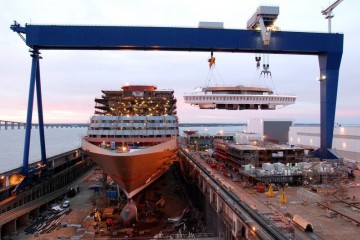What would Elon Musk think about my industry? That is a question that many CEOs might ponder on during their sleepless nights. Maritime CEOs most possibly have other worries – how to survive the next quarter for example, but in case they survive, might want to do themselves a favour and think about how disruptive change in the maritime sector could look. A spectacular glimpse of the future was revealed last week with the announcement of a “Hyperloop” connection to the Jebel Ali port, or – to put it more correctly – a feasibility study to explore that idea. With some aplomb a memorandum of understanding was signed between terminal operator DP World and Hyperloop One, a company that puts in practice Musk’s idea of the Hyperloop. So this is how Elon Musk thinks about the maritime industry? Really?
What is Hyperloop?
The Hyperloop is a new way of moving people and things, states the corporate site. It explains: “The system uses electric propulsion to accelerate a passenger or cargo vehicle through a tube in a low pressure environment. The autonomous vehicle levitates slightly above the track and glides at faster-than-airline speeds over long distances.” The agreement with DP World mentions a Hyperloop connection to transport containers between Jebel Ali Port and a dry port located 29 kilometres land inwards.
The plan is staggeringly spectacular and spectacularly flawed. It is the wrong solution for what is actually not even a problem.
What is the most important problem for container ports? For shipping companies it could be waiting times, port productivity, costs, connectivity. For shippers it could be: reliability, cargo release time, costs, connectivity. For port authorities and terminal operators it could be return on investment, peaks and troughs, administrative bureaucracy. For inhabitants in the port-cities it might be jobs, pollution and truck congestion. For none of the stakeholders is speed between port and dry port a problem. A containership could take weeks to arrive in a port; an average port takes a day to load or unload it; what is the logic of gliding a container to a dry port in a few seconds, where different inspectorates and customs might then take days before they release the container? Remember that we talk about goods that are mostly time insensitive, so without real need to be handled quickly.
If speed would be a problem, why not simply sail faster, or handle quicker or streamline inspections? Which is to make a broader point: there are still so many relatively low-cost solutions available in most ports, that we actually do not need science-fiction to make spectacular improvements. Did I say costs? It must surely be expensive to move at faster-than-airline speed. Who wants to pay air cargo prices for ocean cargo?
Still, the “Hyperloop in Dubai”-plan is a win-win. It gives Hyperloop One the opportunity to test viability and DP World the chance to look super cool – and the system might actually prove useful for passengers in Dubai. As for freight and maritime transport, we still have to wait what Elon Musk really thinks. Stuff for more sleepless nights.



